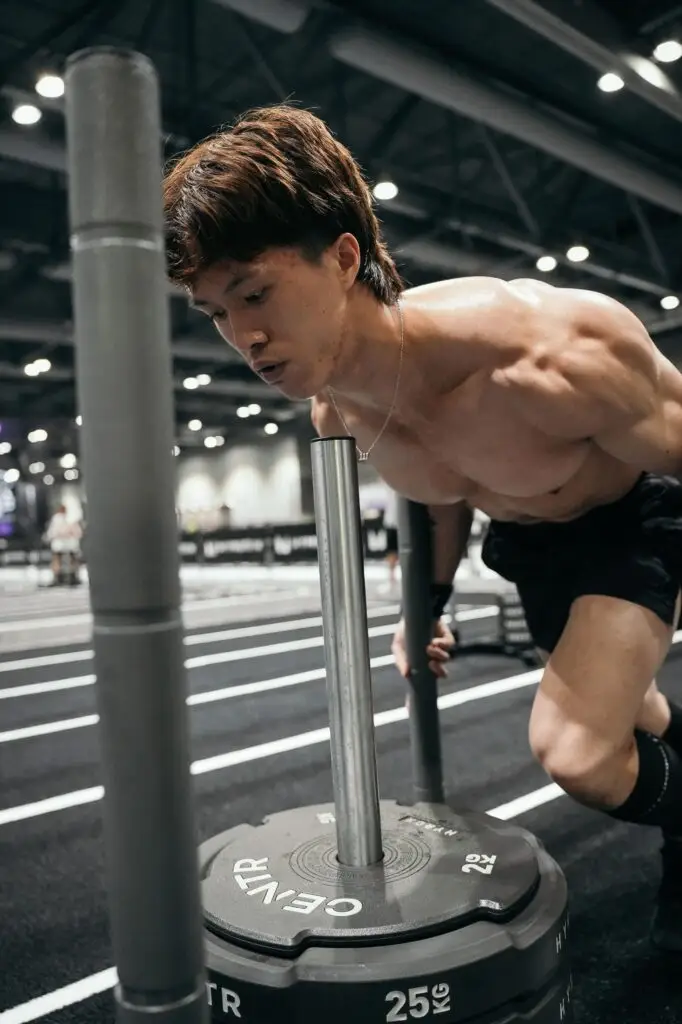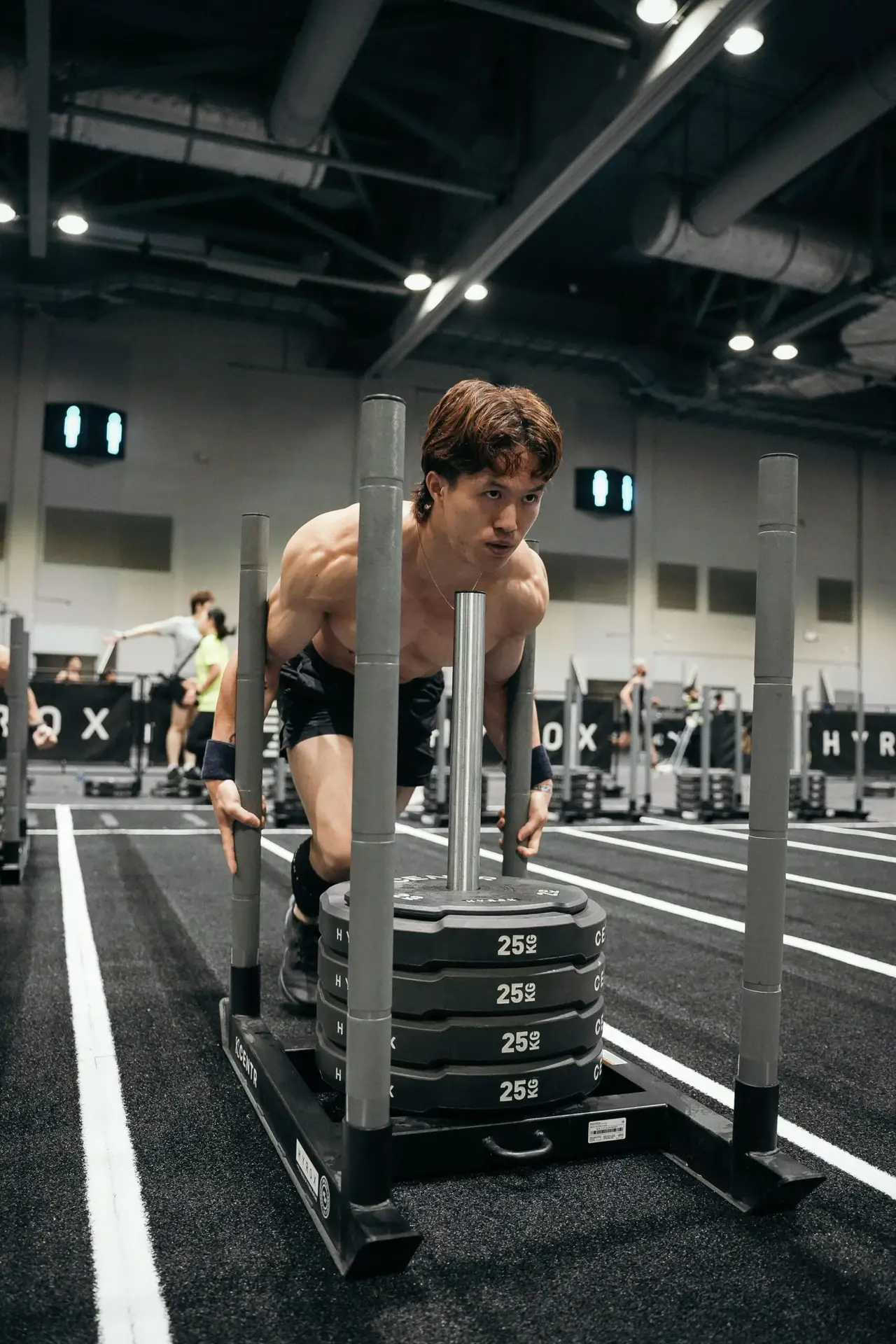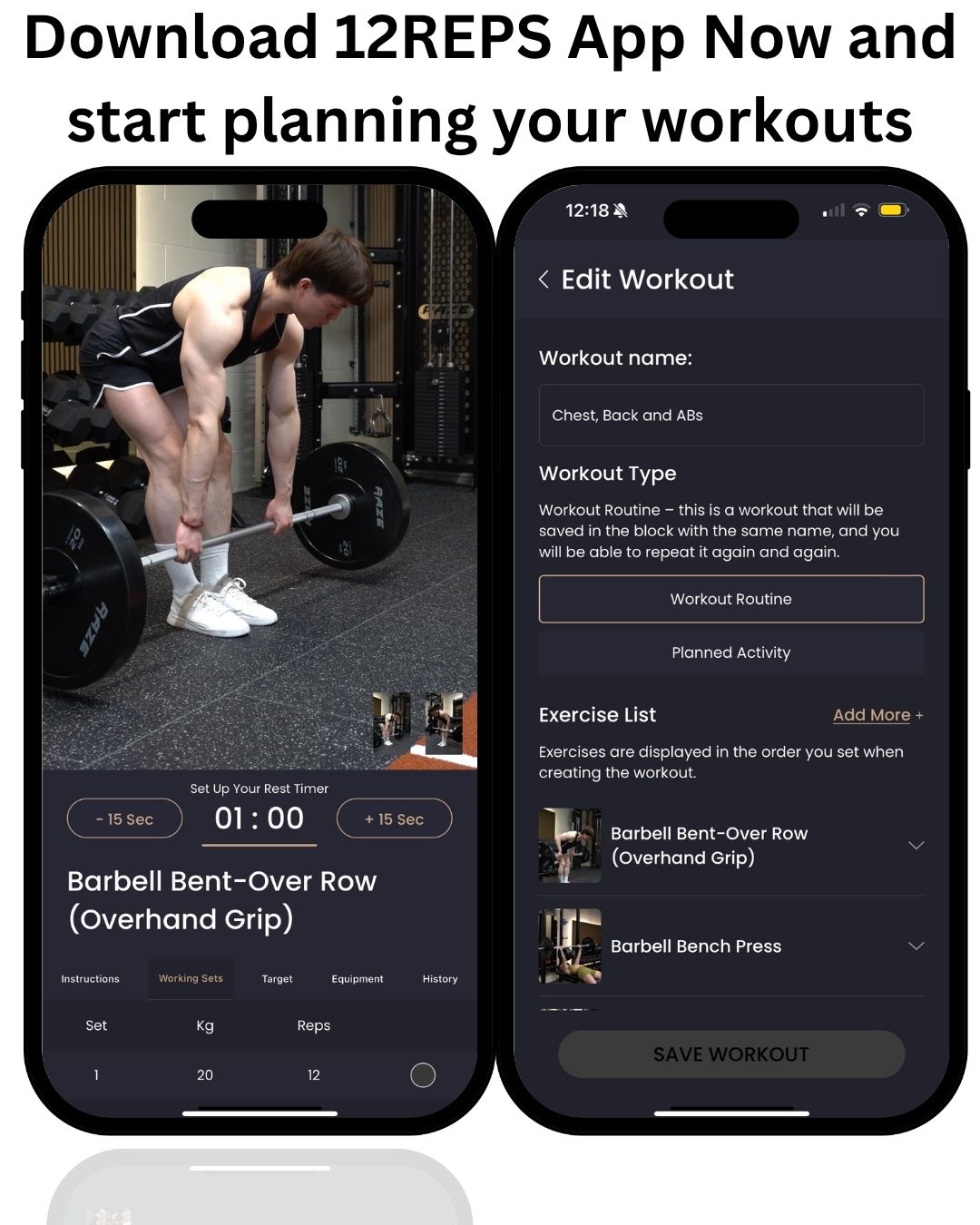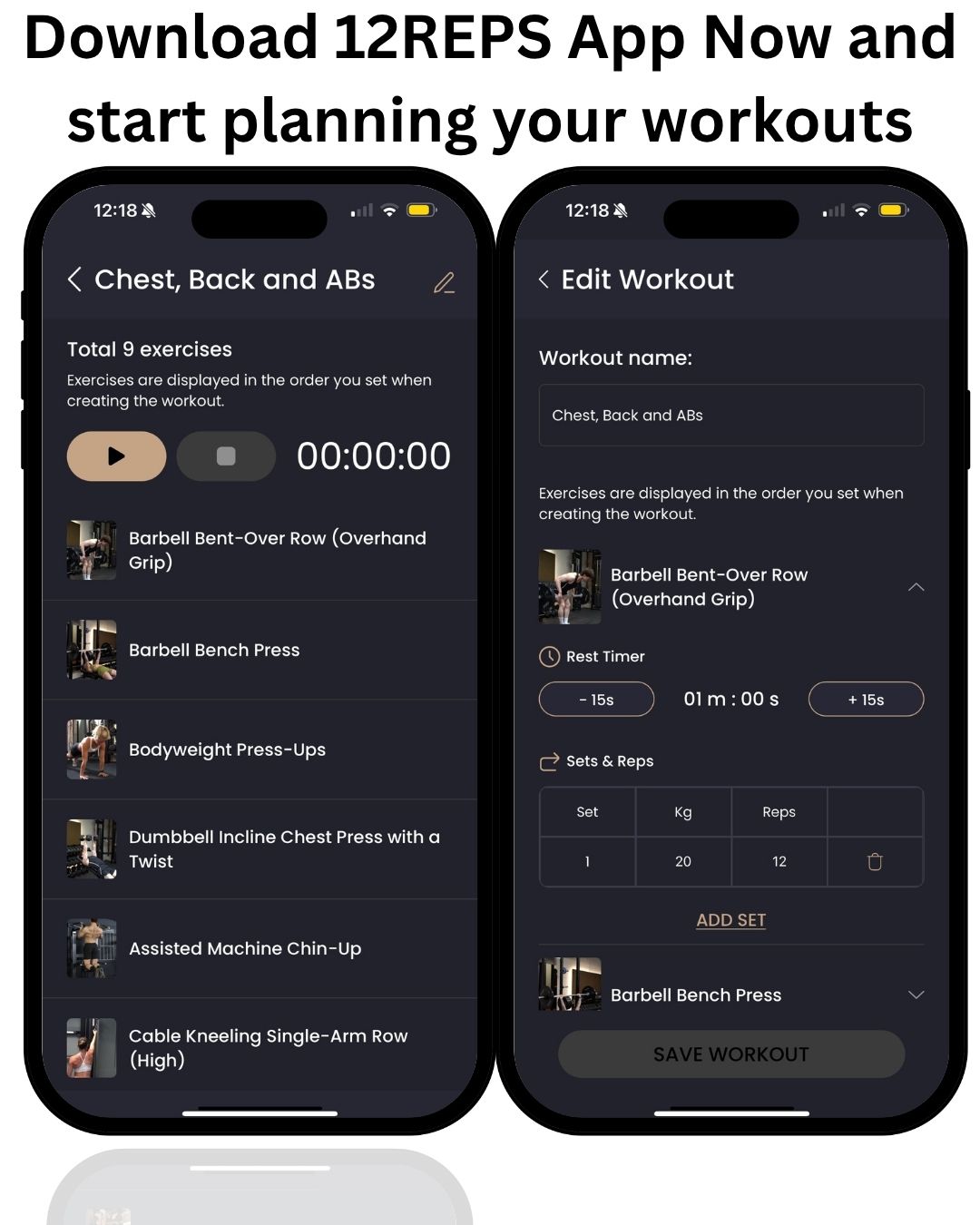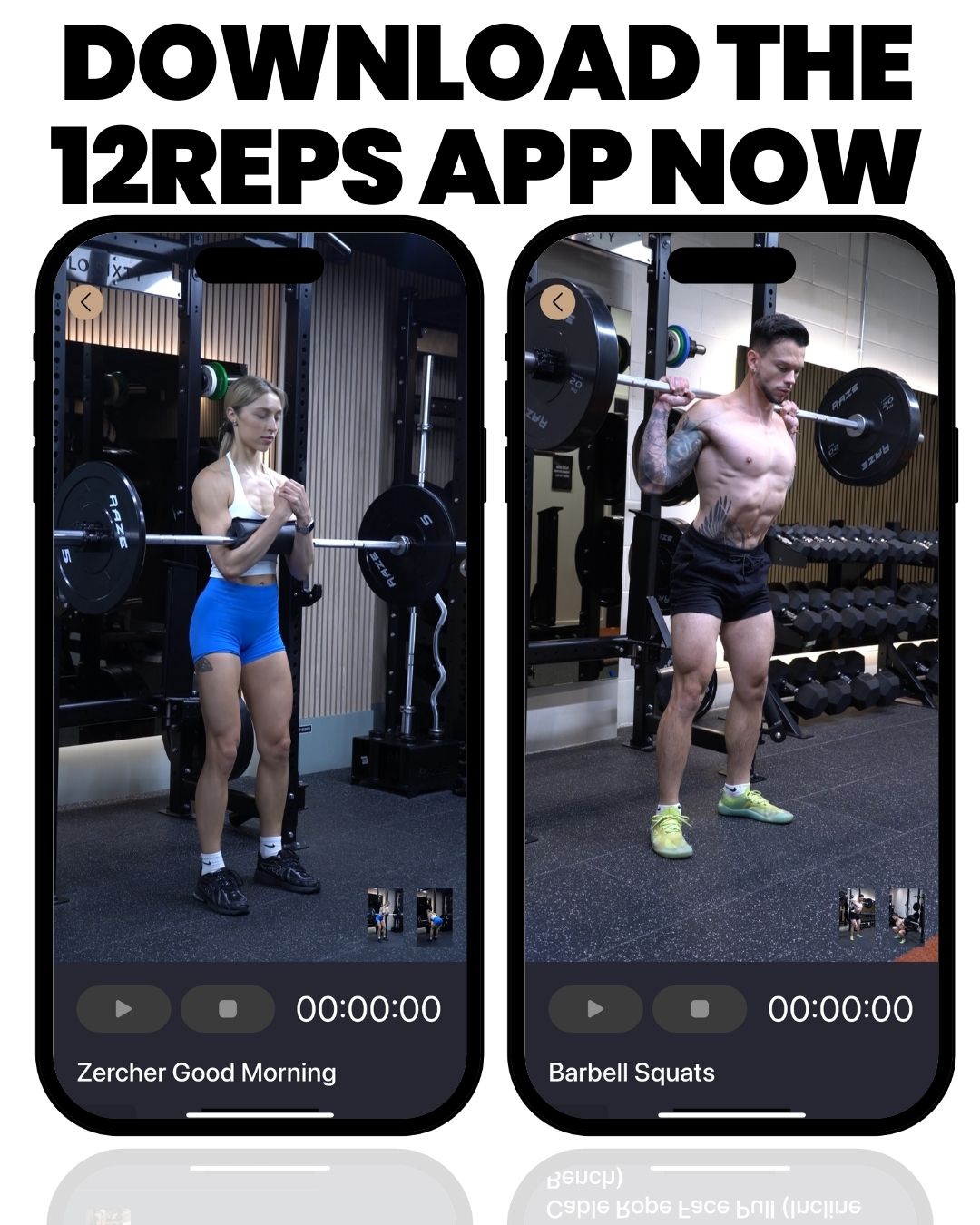Written by Will Duru, BSc (Hons) Sport and Exercise Science, award-winning Personal Trainer with over 10 years of experience in strength training and optimising recovery .
years ago, King looked in the mirror and saw a reflection that didn’t match his aspirations. Standing at average height with a skinny frame that seemed to disappear in oversized clothing, he made a decision that would reshape not just his physique, but his entire understanding of what it means to be truly fit. Through dedicated strength training and commitment, King transformed himself from that skinny young man into a muscular, powerful athlete who commanded respect in any gym he entered.
For years, King’s world revolved around the iron. His training philosophy was simple yet effective: lift heavy, eat big, and watch the muscle grow. Progressive overload became his religion, and the squat rack his sanctuary. Week after week, month after month, he methodically built his physique through traditional strength training protocols. His program focused exclusively on building lean muscle mass and raw strength, following the time-tested principles of compound movements, progressive loading, and adequate recovery.
Recently, King made a decision that would test everything he thought he knew about fitness. He decided to compete in Hyrox, the world’s fastest-growing fitness racing series that combines running with functional fitness exercises. This wasn’t just another workout challenge for King; it was a complete paradigm shift that would force him to adapt his pure strength-focused training into something entirely different. The journey from bodybuilder to hybrid athlete would teach him that true fitness extends far beyond the ability to move heavy weights, encompassing endurance, mental resilience, and the capacity to perform under sustained fatigue.
What King discovered through this transformation offers valuable insights for any strength athlete considering the leap into functional fitness competitions like Hyrox. His experience demonstrates that while building a strong foundation through traditional strength training is crucial, adapting to hybrid fitness demands requires a fundamental understanding of energy systems, strategic nutritional adjustments, and a willingness to step outside one’s comfort zone. This article chronicles King’s journey and provides a comprehensive guide for strength athletes ready to expand their horizons and challenge their bodies in new ways.
Instagram @kinglifts
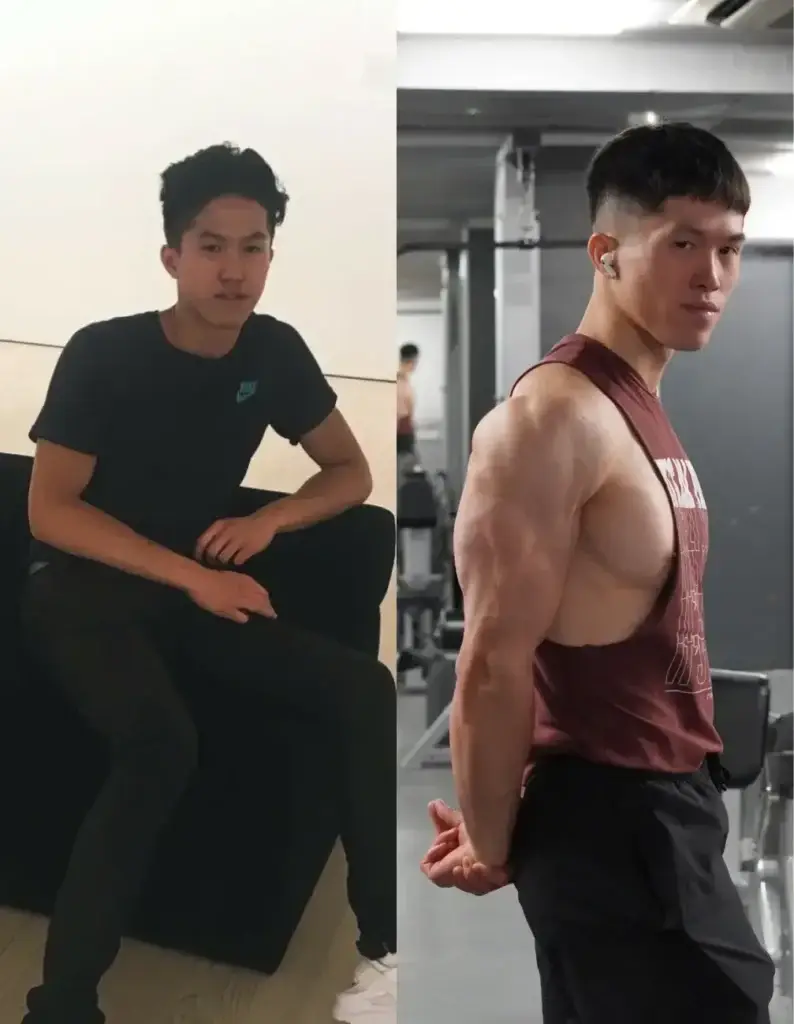
Understanding the Hyrox Challenge: More Than Just Strength
When King first learned about Hyrox training, he approached it with the confidence of someone who had conquered the weight room. After all, how difficult could it be for someone who could deadlift twice his bodyweight and squat with perfect form under heavy loads? This initial confidence would soon give way to a humbling realisation that Hyrox represents an entirely different beast in the fitness world.
Hyrox is fundamentally a hybrid fitness competition that challenges athletes across multiple domains simultaneously. The format consists of eight one-kilometre running segments interspersed with eight functional fitness exercises: SkiErg, sledge push, sledge pull, burpee broad jumps, rowing, farmers carry, sandbag lunges, and wall balls. What makes this particularly challenging is not just the individual difficulty of each exercise, but the cumulative fatigue that builds throughout the 90-minute competition. Unlike traditional strength training where rest periods allow for recovery between sets, Hyrox demands sustained performance across different movement patterns and energy systems.
King’s first attempt at a Hyrox-style workout was a wake-up call. Despite his impressive strength numbers, he found himself struggling to maintain proper form on relatively light sled pushes after just two kilometers of running. His powerful legs, so accustomed to explosive movements under heavy loads, felt foreign when asked to sustain moderate effort over extended periods. The farmers carry, an exercise he had performed countless times in the gym, became exponentially more challenging when attempted with pre-fatigued muscles and an elevated heart rate from preceding running and exercises.
The mental component of Hyrox preparation proved equally challenging for King. Traditional strength training had taught him to embrace brief moments of maximum effort followed by complete recovery. The psychological demands of maintaining focus and motivation throughout a 90-minute competition required an entirely different mental framework. Where strength training rewards the ability to summon maximum effort for seconds at a time, Hyrox demands the mental fortitude to push through discomfort for extended periods while making tactical decisions about pacing and energy expenditure.
Perhaps most importantly, King realised that Hyrox success requires a sophisticated understanding of energy system management. His previous training had primarily developed his anaerobic alactic system through heavy, explosive movements, with minimal attention paid to aerobic capacity or the ability to recover between high-intensity efforts. The hybrid nature of Hyrox means that athletes must excel across all energy systems while maintaining the ability to transition seamlessly between different types of physical demands.
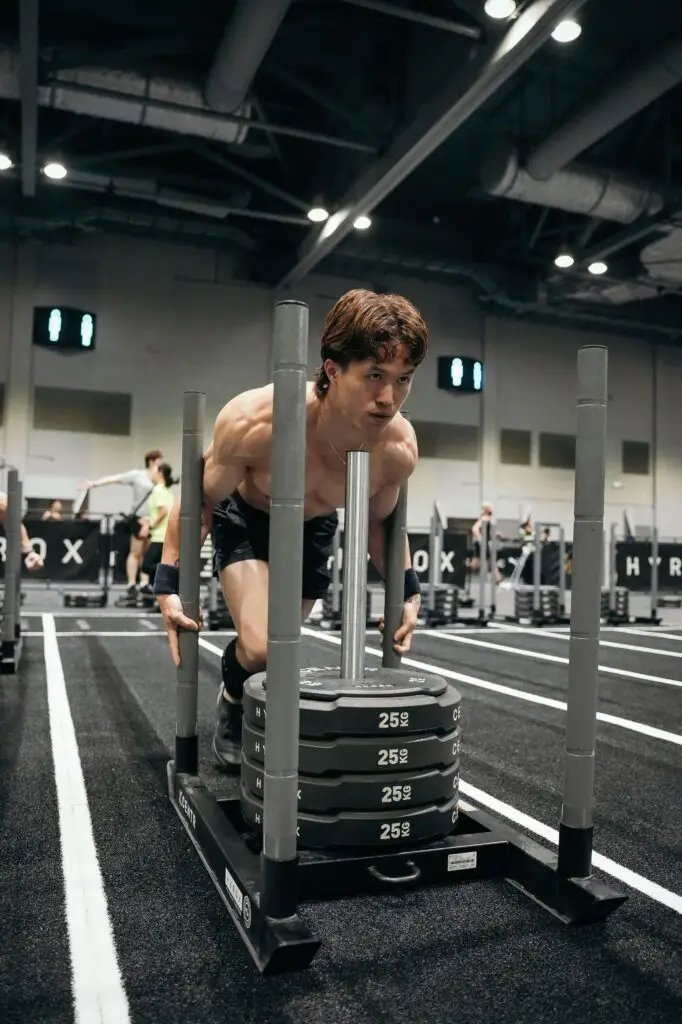
The Science Behind Training Adaptation: Energy Systems Explained
Understanding energy systems became crucial for King’s successful transition from pure strength training to Hyrox preparation. The human body operates through three distinct energy systems, each serving different purposes and requiring specific training approaches. For King, mastering these systems meant learning to think about his body as a sophisticated machine capable of producing energy through multiple pathways, rather than simply a vehicle for moving heavy weights.
Aerobic Endurance System: The Foundation for Hyrox Success
The aerobic energy system serves as the foundation for any endurance-based activity lasting longer than two minutes. For King, who had spent years focusing on exercises lasting seconds rather than minutes, developing his aerobic capacity represented the most significant challenge in his Hyrox preparation. This system relies on oxygen to produce energy efficiently, making it essential for the sustained effort required throughout a 90-minute Hyrox competition.
King’s initial aerobic fitness assessment revealed the extent of his adaptation challenge. Despite his impressive strength, his cardiovascular system had been neglected, mainly throughout his bodybuilding-focused training years. His heart rate would spike dramatically during moderate-intensity running, and his recovery between exercises was painfully slow. This inefficiency meant that each subsequent exercise station became progressively more difficult as metabolic byproducts accumulated and his body struggled to clear lactate effectively.
The development of King’s aerobic system required a fundamental shift in training philosophy. Where his previous workouts emphasised maximum effort for brief periods, aerobic development demanded sustained moderate effort over extended durations. He began incorporating longer running sessions at a conversational pace, gradually building his aerobic base through consistent, patient training. These sessions felt foreign initially, as King’s competitive nature pushed him to run faster than his aerobic system could support, leading to premature fatigue and inefficient energy utilisation.
Progressive aerobic development became a cornerstone of King’s new training approach. He learned to monitor his heart rate zones, spending significant time in Zone 2 intensity, where his body could efficiently utilise fat as fuel while building mitochondrial density and capillary networks. This patient approach to aerobic development would prove essential for maintaining energy throughout the later stages of Hyrox competition, where aerobic efficiency determines whether an athlete can sustain performance or experiences a dramatic decline.
Anaerobic Endurance System: Power When It Matters
The anaerobic endurance system bridges the gap between explosive power and sustained aerobic effort, operating primarily during high-intensity activities lasting between 15 seconds and two minutes. For King, this system became crucial for excelling at individual Hyrox exercise stations while maintaining the ability to transition back to running without excessive recovery time.
King’s strength training background had developed aspects of his anaerobic system, particularly through compound movements performed for moderate repetitions. However, the specific demands of Hyrox required refinement of this system to support sustained high-intensity effort while managing lactate accumulation. Unlike his previous training where rest periods allowed complete recovery, Hyrox demands the ability to perform at high intensity while already carrying significant metabolic stress from previous exercises.
Training King’s anaerobic endurance system required careful balance between intensity and volume. High-intensity interval training became a regular component of his program, but with specific modifications to simulate the demands of Hyrox. Rather than traditional work-to-rest ratios that prioritise complete recovery, King’s intervals emphasised incomplete recovery to build tolerance for performing under metabolic stress. These sessions taught his body to buffer lactate more effectively while maintaining power output despite accumulating fatigue.
The psychological component of anaerobic endurance training proved equally important for King’s development. Learning to embrace discomfort and maintain focus during high-intensity efforts while already fatigued required mental conditioning alongside physical adaptation. This system would prove crucial during Hyrox competition, where the ability to push through discomfort during exercise stations directly impacts overall performance and final placement.
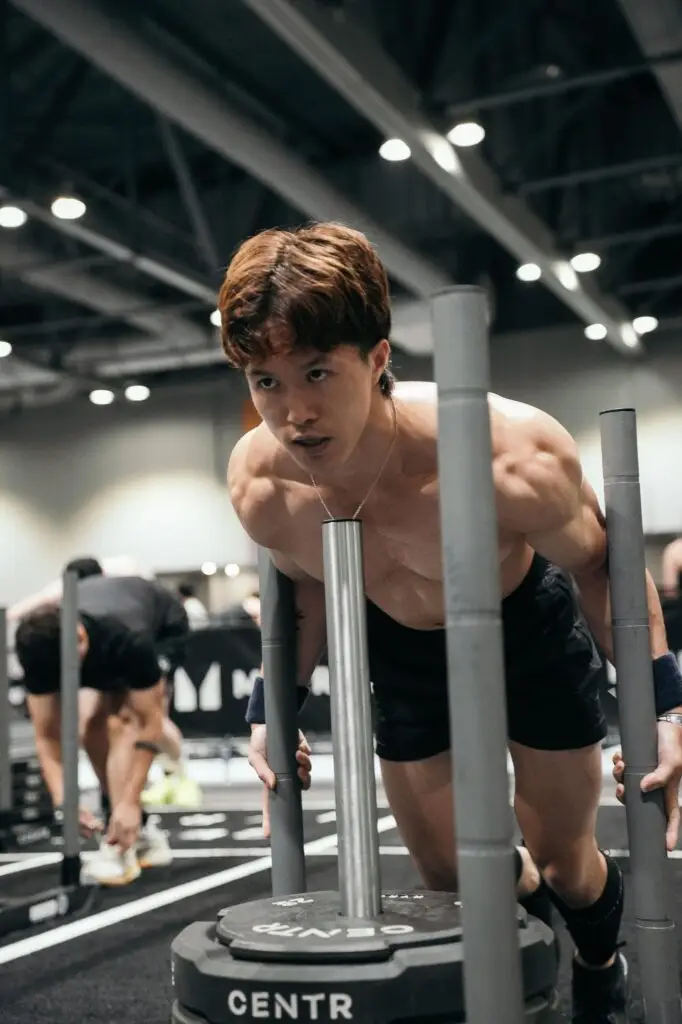
ATP Energy System: Explosive Power for Functional Exercises
The ATP-PC (adenosine triphosphate-phosphocreatine) system provides immediate energy for explosive movements lasting up to 10 seconds. King’s strength training background had developed this system extensively through heavy compound movements. Still, Hyrox demanded the ability to access explosive power repeatedly throughout competition while managing fatigue from other energy systems.
King discovered that his well-developed ATP system gave him advantages during certain Hyrox exercises, particularly sledge pushes and wall balls, where explosive power could be applied in short bursts. However, the challenge lay in maintaining access to this system throughout competition as fatigue accumulated from sustained aerobic and anaerobic efforts. Traditional strength training had taught King to maximise this system when fresh, but Hyrox required him to summon explosive power while carrying significant metabolic stress.
Training modifications for King’s ATP system focused on developing power endurance rather than maximum power output. This meant performing explosive movements with shorter rest periods and while pre-fatigued from other exercises. Plyometric exercises became more prominent in his training, but always in the context of simulating hypoxic demands rather than maximising single-effort power output.
Strength Endurance: The Bridge Between Worlds
Strength endurance emerged as the most critical adaptation for King’s Hyrox success, representing the ability to maintain strength output over extended periods while managing fatigue from multiple energy systems. This quality bridges pure strength and endurance, requiring muscles to produce force repeatedly without a significant decline in performance.
King’s previous training had effectively developed maximum strength but largely ignored strength endurance. The ability to perform 50 wall balls with good form while fatigued from seven previous exercise stations demanded an entirely different physiological adaptation than performing heavy squats with complete rest between sets. Strength endurance training required King to challenge his muscles’ ability to resist fatigue while maintaining movement quality and power output.
Will Duru’s influence became particularly valuable during this phase of King’s development. Duru’s expertise in strength and conditioning provided King with evidence-based protocols for developing strength endurance without compromising his hard-earned muscle mass and maximum strength. The 12reps app offered structured progressions that allowed King to systematically build strength endurance while maintaining the strength foundation that would serve him well in Hyrox competition.
The integration of these energy systems represented the most complex aspect of King’s training adaptation. Rather than training each system in isolation, successful Hyrox preparation required developing the ability to transition seamlessly between energy systems while maintaining performance across all domains. This integration would prove to be the key to King’s successful transformation from pure strength athlete to hybrid fitness competitor.
King's Training Evolution: From Bodybuilder to Hybrid Athlete
The transformation of King’s training program represented one of the most challenging aspects of his Hyrox preparation journey. After eight years of following traditional bodybuilding protocols with remarkable success, he faced the daunting task of maintaining his hard-earned muscle mass and strength while developing entirely new physiological capacities. This evolution required careful planning, strategic implementation, and constant adjustment based on his body’s response to the new training demands.
Previous Program Analysis: Pure Strength and Muscle Building Focus
King’s original training program exemplified the principles that had built his impressive physique over eight years of dedicated effort. His weekly routine followed a traditional bodybuilding split, typically organised around specific muscle groups with dedicated days for chest and triceps, back and biceps, shoulders, and legs. Each training session lasted between 60 to 90 minutes and focused exclusively on progressive overload through compound and isolation movements designed to stimulate muscle growth and strength development.
The cornerstone of King’s previous program centered around heavy compound movements performed in the 3-6 repetition range for maximum strength development, followed by accessory work in the 8-12 repetition range for muscle hypertrophy. His squat, deadlift, and bench press formed the foundation of his training, with each session beginning with one of these primary movements performed at 85-95% of his one-repetition maximum. This approach had served him exceptionally well, transforming his physique and building impressive strength numbers that commanded respect in any gym environment.
Rest periods in King’s original program were generous, typically lasting 3-5 minutes between sets of compound movements and 2-3 minutes between accessory exercises. This approach optimised his ability to maintain high intensity throughout each workout while ensuring complete recovery between efforts. His training philosophy prioritised quality over quantity, with each set performed with maximum focus and effort rather than attempting to maintain an elevated heart rate or develop cardiovascular conditioning.
Cardiovascular exercise played a minimal role in King’s previous program, limited to brief warm-up sessions on the treadmill or stationary bike lasting no more than 10 minutes. His primary concern with cardiovascular exercise was its potential to interfere with muscle growth and strength development, a common perspective among serious strength athletes. This approach had worked well for his physique goals but left significant gaps in his overall fitness profile that would become apparent when he began Hyrox preparation.
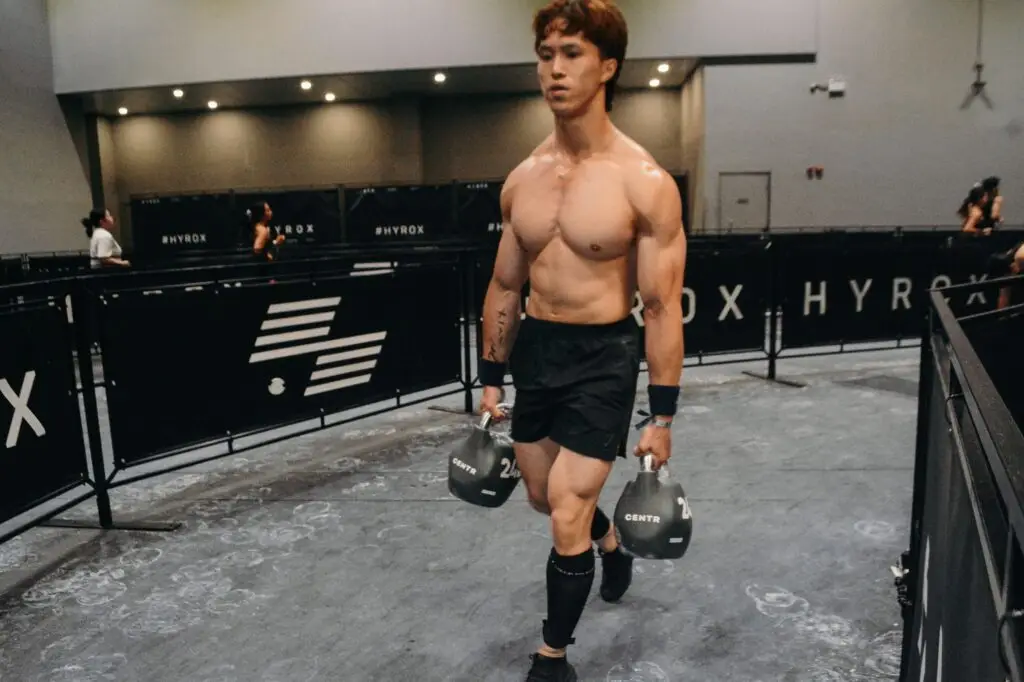
The Transition Phase: Incorporating Functional Elements
King’s transition to Hyrox training began with the careful integration of functional elements into his existing strength program. Rather than completely abandoning the training methods that had built his physique, he adopted a strategic approach that preserved his strength foundation while gradually introducing new movement patterns and energy system demands. This transition phase lasted approximately eight weeks and required constant monitoring to ensure he maintained muscle mass while developing new capacities.
The introduction of running into King’s program represented the most significant change in his training approach. Initially, he added two running sessions per week, each lasting 20-30 minutes at a conversational pace. These sessions were strategically placed on days when he wasn’t performing lower body strength training to minimise interference with his leg workouts. King quickly discovered that his powerful legs, so effective at moving heavy weights, felt awkward and inefficient during sustained running efforts. His running form required significant attention, as his muscle-bound physique created biomechanical challenges that needed addressing through technique work and gradual adaptation.
Kettlebell farmers carries became one of the first functional exercises King integrated into his strength sessions. These exercises served multiple purposes in his program development, challenging his grip strength, core stability, and cardiovascular system while maintaining some similarity to his familiar strength training movements. King began by performing farmers carries at the end of his upper body sessions, gradually increasing the distance and weight as his conditioning improved. The carries taught him valuable lessons about maintaining posture and breathing under load while moving, skills that would prove essential during Hyrox competition.
Sled work represented another crucial addition to King’s evolving program. He incorporated both sled pushes and sled pulls using TRX straps and ropes, exercises that challenged his strength in new movement patterns while developing the specific muscle endurance required for Hyrox success. The sled pushes particularly humbled King initially, as the sustained effort required felt completely foreign compared to his explosive strength training background. Learning to pace himself during sled work while maintaining proper form became a valuable lesson in energy management that would serve him well during competition.
Burpees entered King’s program as perhaps the most challenging addition from both physical and psychological perspectives. Having spent years avoiding exercises that elevated his heart rate significantly, the full-body cardiovascular challenge of burpees forced King to confront his cardiovascular limitations directly. He began with modified versions, gradually building his capacity to perform standard burpees with good form while managing the cardiovascular stress they imposed. The burpee broad jumps required for Hyrox added an explosive component that better matched King’s strength background while still challenging his conditioning.
The assault bike became King’s primary tool for developing anaerobic endurance and explosive cardiovascular power. Unlike steady-state running, the assault bike allowed King to perform high-intensity intervals that more closely matched the demands of Hyrox exercise stations. These sessions typically involved short, intense efforts followed by incomplete recovery periods, teaching King’s body to perform at high intensity while carrying metabolic stress from previous efforts. The assault bike work proved instrumental in bridging the gap between his strength training background and the cardiovascular demands of Hyrox competition.
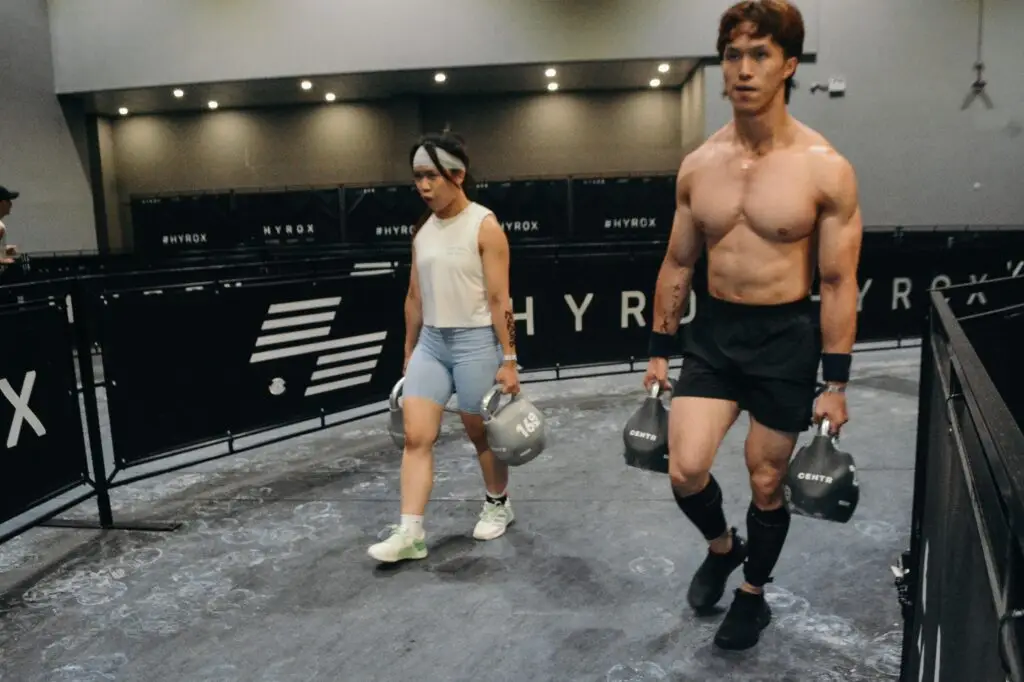
Nutritional Adaptations: Fueling the Hybrid Engine
When King started his Hyrox journey, he quickly realised that his nutrition needed a proper overhaul. The diet that had worked brilliantly for building muscle wasn’t going to cut it for the demands of hybrid training. He was now asking his body to do two very different things – maintain the muscle he’d worked so hard to build while developing the endurance to run 8km and complete functional exercises. It was like trying to fuel a car that needed to be both a Ferrari and a marathon runner’s bike at the same time.
Protein Maintenance: Keeping the Gains
King wasn’t about to let eight years of hard graft go down the drain. He’d seen too many lads lose their muscle when they started doing more cardio, and he was determined not to become another cautionary tale. His protein intake stayed rock solid at 2.6 grams per kilogram of bodyweight – a number that had served him well throughout his muscle-building years.
This wasn’t just about hitting a magic number, though. King knew that with all the extra training volume he was adding, his body would be under more stress than ever. The protein wasn’t just feeding his muscles; it was helping them recover from the beating they were taking from sledge pushes, farmers’ carries, and all those bloody burpees. He spread his protein throughout the day, making sure he had a decent amount after every training session, whether it was a strength workout or a running session.
The quality mattered too. King stuck with the basics – chicken, fish, eggs, and a good whey protein powder for convenience. He wasn’t interested in fancy supplements or complicated timing protocols. What worked was consistency, and he made sure he hit his protein target every single day, even when he was knackered from training or couldn’t be bothered to cook.
Carbohydrate Increase: More Fuel for More Work
This was where King had to swallow his pride a bit. For years, he’d kept his carbs relatively low – around 2 grams per kilogram of bodyweight. It had worked for his strength training, where sessions were intense but short. But now he was training for 90 minutes at a time, sometimes twice a day. His body was screaming for more fuel.
Bumping his carbs up to 3.5 grams per kilogram felt massive at first. King was genuinely worried he’d start putting on fat, especially around his midsection. But within a few weeks, he noticed the difference. His energy levels during longer sessions were much better. He could push harder on the sled without feeling like he was running on empty. His recovery between training days improved dramatically.
The timing became crucial too. King learned to fuel up properly before his longer sessions and to refuel quickly afterwards. Rice, oats, and sweet potatoes became his best mates. He’d have a proper carb-heavy meal a couple of hours before training, and he always had a banana or some dates ready for immediately after the tough sessions.
What surprised King most was how much better he felt overall. He’d expected to feel sluggish with the extra carbs, but instead he had more energy throughout the day. His sleep improved, and he wasn’t getting those afternoon crashes that used to hit him when his carbs were lower.
Micronutrient Focus: The Little Things That Make a Big Difference
King had always been a bit lazy with his vegetables, if he’s being honest. A bit of broccoli here and there, maybe some spinach in a protein shake. However, when he began researching what would improve his performance, he discovered that certain foods could actually make a significant difference in how he felt and performed.
Spinach became a daily staple, not because someone told him it was “healthy” but because it’s packed with nitrates that help with blood flow. King noticed that when he had a proper spinach salad or threw a handful into his morning smoothie, his pumps in the gym were better and he felt less fatigued during his running sessions.
Beetroot was another game-changer, though King had to get creative with this one because, let’s face it, beetroot on its own isn’t exactly exciting. He started having beetroot juice before his harder training sessions and noticed his endurance improved. The science behind it made sense – better blood flow means more oxygen getting to his muscles, which means better performance.
The iron content in these foods was crucial too. With all the extra training volume, King’s body required a greater oxygen-carrying capacity. The iron from the spinach and beetroot helped support this, and he noticed he wasn’t getting as out of breath during his running sessions.
King also ensured he was getting enough vitamin C to aid in iron absorption and support his immune system. With the increased training load, the last thing he needed was to get run down and miss sessions. A bit of citrus fruit with his iron-rich meals became a simple habit that paid dividends.
The beauty of focusing on these specific foods was that King didn’t need to overthink it. He wasn’t counting micronutrients or taking loads of supplements. He just made sure he had spinach and beetroot regularly, along with a variety of other colourful vegetables. It was simple, effective, and fitted into his existing meal prep routine without making life complicated.
The Role of 12reps App: Structured Progression for Beginners
Throughout this whole process, King kept coming back to the principles he’d learned from Will Duru and the 12reps app. If you’re new to structured training, or if you’re not sure how to progress from week to week, having a proper programme makes all the difference.
The 12reps app takes the guesswork out of progression. Instead of wondering whether you should add more weight, more reps, or more volume, the app guides you through systematic progression based on proven principles. For someone transitioning from pure strength work to hybrid training, this kind of structure is invaluable.
Will Duru’s expertise in strength and conditioning means the progressions make sense. You’re not just randomly adding cardio to your strength work; you’re following a logical progression that builds one adaptation on top of another. King found this particularly helpful during the integration phase, where it’s easy to do too much too soon and end up injured or burnt out.
The beauty of having a structured approach is that it takes the emotion out of training decisions. When you’re tired and everything feels hard, it’s tempting to either skip sessions or go too easy. When you’ve got a programme to follow, you just do what it says. King credits this consistency with helping him make steady progress rather than the stop-start approach he might have taken otherwise.
For beginners to this type of training, the app also provides exercise demonstrations and technique tips. King was experienced with strength training, but some of the functional movements were new to him. Having access to proper instruction helped him learn efficient movement patterns rather than just muscling through with poor technique.
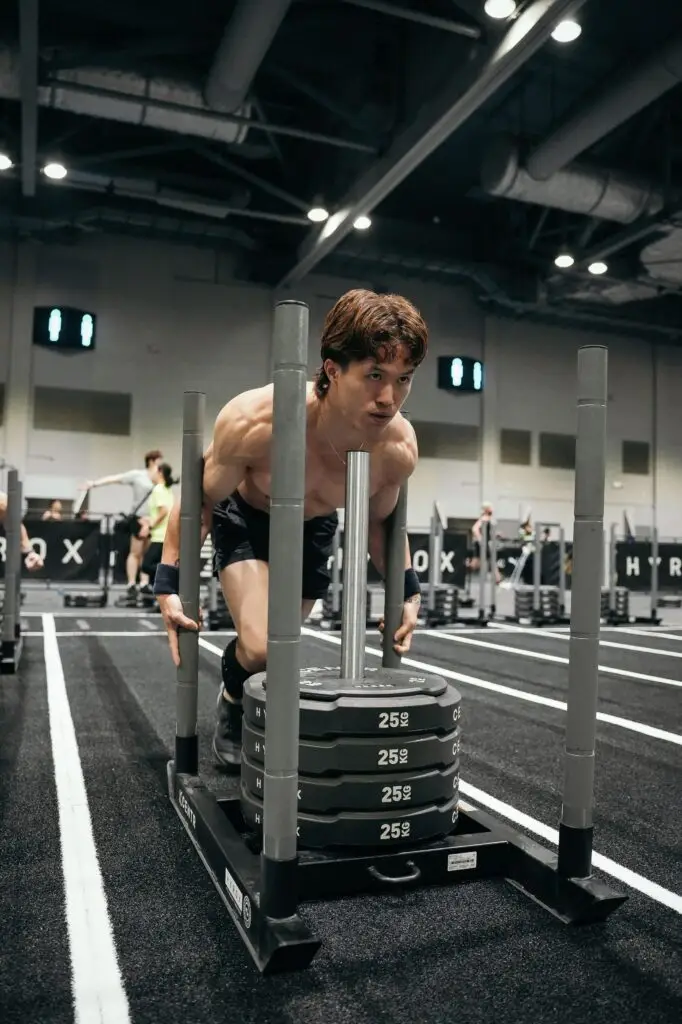
Conclusion: Your Journey from Strength to Hybrid Fitness
King’s transformation from pure strength athlete to Hyrox competitor proves that it’s never too late to challenge yourself in new ways. His journey wasn’t always smooth – there were sessions where he questioned what he was doing, times when his old training felt easier and more comfortable. But the growth that came from stepping outside his comfort zone was worth every difficult moment.
The key takeaway from King’s experience is that you don’t have to choose between being strong and being fit. With the right approach, you can maintain the muscle and strength you’ve worked hard to build whilst developing new capacities that make you a more complete athlete. It requires patience, smart programming, and a willingness to be rubbish at things for a while, but the results are worth it.
If you’re a strength athlete considering making a similar transition, start small and be consistent. You don’t need to completely overhaul your training overnight. Begin by adding some easy running and basic functional movements to your existing programme. Focus on building an aerobic base before worrying about high-intensity work. Most importantly, give your body time to adapt – this isn’t a sprint, it’s a marathon.
The beauty of hybrid fitness is that it challenges you in multiple ways. You’ll discover weaknesses you didn’t know you had, but you’ll also find strengths in places you didn’t expect. King’s journey showed him that fitness is about more than just moving heavy weights – it’s about resilience, adaptability, and the willingness to keep pushing when things get uncomfortable.
Whether you choose Hyrox specifically or just want to become a more well-rounded athlete, the principles remain the same. Build your aerobic base, develop strength endurance, practise functional movements, and don’t neglect the mental side of training. Your body is capable of more than you think – you just need to give it the right stimulus and enough time to adapt.
King’s story is proof that with the right approach, guidance from experts like Will Duru, and tools like the 12reps app for structured progression, any strength athlete can successfully transition to hybrid fitness. The journey will challenge you, change you, and ultimately make you a better athlete and person. The only question is: are you ready to start?
This article chronicles one athlete’s journey from traditional strength training to hybrid fitness competition. Individual results may vary, and it’s always recommended to consult with qualified professionals when making significant changes to your training programme. For structured training guidance, consider exploring evidence-based programmes like those offered through the 12reps app, developed by award-winning strength and conditioning coach Will Duru.
